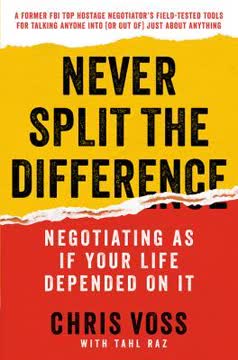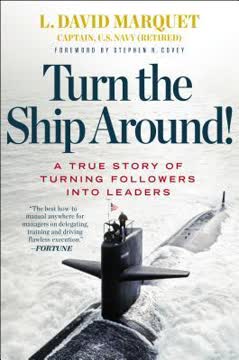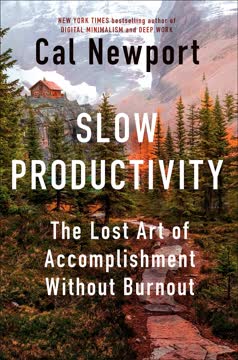Key Takeaways
1. Build diverse teams for complex challenges
Multicultural teams often generate frustrating management dilemmas.
Diversity fuels innovation. Complex challenges require teams with diverse skills, perspectives, and backgrounds. While multicultural and cross-functional teams can create friction, they also have the potential to generate breakthrough solutions by combining different areas of expertise and ways of thinking.
Manage cultural differences. Key challenges in diverse teams include:
- Communication styles (direct vs. indirect)
- Language barriers and accents
- Attitudes toward hierarchy and authority
- Decision-making norms
To overcome these obstacles, leaders should:
- Openly acknowledge cultural gaps
- Establish clear team norms and processes
- Provide cultural awareness training
- Encourage perspective-taking and empathy
- Use structural interventions like subgroups when needed
2. Foster constructive conflict through fact-based discussions
Facts let people move quickly to the central issues surrounding a strategic choice.
Data grounds debates in reality. High-performing teams focus discussions on objective, up-to-date information rather than opinions or personalities. This approach depersonalizes conflicts and keeps the focus on critical issues.
Create a fact-based culture. Strategies for promoting fact-based discussions:
- Measure key metrics obsessively (internal operations and external environment)
- Share data widely and frequently among team members
- Invest in strong financial and analytical capabilities
- Encourage data-driven decision making at all levels
- Challenge assumptions and "gut feelings" with evidence
By grounding debates in facts, teams can engage in constructive conflict without degenerating into interpersonal battles or political maneuvering.
3. Develop multiple alternatives to enrich decision-making
To promote debate, managers will even introduce options they do not support.
Avoid false dichotomies. Considering only one or two options often leads to polarization and conflict. Instead, high-performing teams deliberately develop multiple alternatives - often four or five - to enrich discussions and decision-making.
Benefits of multiple alternatives:
- Diffuses conflict by allowing nuanced positions
- Stimulates creative thinking and novel solutions
- Enables integrative solutions combining elements of different options
- Allows face-saving position shifts as discussions evolve
- Brings team together in shared problem-solving
Techniques for generating alternatives:
- Brainstorming sessions
- Cross-functional input
- Scenario planning
- Benchmarking competitors and other industries
- Challenging assumptions and constraints
By expanding the solution space, teams can engage in more productive debates and often arrive at superior decisions.
4. Unite teams with common goals and shared vision
Create common goals. Unite a team with common goals. This rallies everyone to work on decisions as collaborations, making it in everyone's interest to achieve the best solution.
Align individual and team objectives. When team members share a compelling common purpose, they are more likely to collaborate effectively and subordinate personal agendas to group success. A unifying vision provides context for decisions and motivates peak performance.
Techniques for creating shared goals:
- Develop an inspiring mission statement
- Set ambitious team targets
- Link individual performance to team outcomes
- Celebrate collective achievements
- Reinforce shared purpose through regular communication
Examples of rallying cries:
- "Create the computer firm of the decade" (Star Electronics)
- "Build the best damn machine on the market" (Premier Technologies)
With a strong sense of common purpose, teams can maintain cohesion even amid vigorous debates and disagreements on specific issues.
5. Use humor to diffuse tension and promote collaboration
Humor—even if it seems contrived at times—relieves tension and promotes collaborative esprit within a team.
Laughter builds bonds. Humor serves as a powerful tool for diffusing tension, reducing stress, and fostering a positive team dynamic. It helps create an environment where people feel comfortable sharing ideas and engaging in constructive debate.
Benefits of humor in teams:
- Relieves stress and anxiety
- Increases creativity and mental flexibility
- Builds rapport and trust among team members
- Makes difficult conversations more palatable
- Enhances team cohesion and morale
Ways to incorporate humor:
- Encourage lighthearted banter in meetings
- Organize team-building activities with fun elements
- Share amusing anecdotes or self-deprecating stories
- Use appropriate jokes to break tension in heated moments
- Create playful traditions or inside jokes
While humor should be used judiciously and appropriately, it can significantly improve team dynamics and effectiveness.
6. Balance power structures for equitable participation
The CEO is more powerful than other executives, but the others wield substantial power as well—especially in their own areas of responsibility.
Distribute authority. Effective teams maintain a balance of power that allows all members to contribute meaningfully to decisions. While the CEO holds ultimate authority, other executives should have significant influence, particularly in their areas of expertise.
Strategies for balancing power:
- Clearly define decision rights and responsibilities
- Rotate leadership of specific initiatives or projects
- Encourage input from all team members, regardless of rank
- Use structured decision-making processes that give voice to all perspectives
- Empower functional leaders to make decisions in their domains
A balanced power structure promotes fairness, leverages diverse expertise, and increases buy-in for team decisions. It also helps prevent the CEO from becoming a "dictator by default" when the team reaches an impasse.
7. Seek consensus with qualification for effective decisions
If the team can't reach consensus, the most relevant senior manager makes the decision, guided by input from the others.
Strive for agreement, decide with authority. While consensus is ideal, it's not always achievable or desirable. High-performing teams aim for broad agreement but have a clear process for making decisions when full consensus isn't reached.
The "consensus with qualification" approach:
- Thoroughly discuss issues and options as a team
- Strive for consensus through debate and negotiation
- If consensus isn't reached, the most relevant senior executive decides
- The decision-maker incorporates input from team discussions
- All team members support the final decision, even if they disagreed
This approach balances the benefits of collaborative decision-making with the need for timely and clear choices. It maintains team cohesion while avoiding decision paralysis or lowest-common-denominator compromises.
8. Embrace virtuoso teams for breakthrough innovation
If you want great performances of any type, you have to start with great people.
Assemble star performers. Virtuoso teams comprise elite experts brought together for ambitious, high-stakes projects. While potentially volatile, these teams can achieve extraordinary results by leveraging diverse, world-class talents.
Characteristics of virtuoso teams:
- Handpicked, complementary star performers
- Ambitious, transformative goals
- Intense, high-energy work environments
- Willingness to challenge conventional wisdom
- Strong individual and collective egos
Virtuoso teams are particularly suited for:
- Radical innovation projects
- Entering new markets or industries
- Solving complex, unprecedented problems
- Driving organizational transformation
While not appropriate for all situations, virtuoso teams can deliver breakthrough performance when conventional approaches fall short.
9. Make teamwork a contact sport with frequent interactions
When virtuoso teams are in action, impassioned dialogue becomes the critical driver of performance, not the work itself.
Prioritize face-to-face collaboration. High-performing teams, especially virtuoso teams, thrive on frequent, intense, in-person interactions. This "contact sport" approach accelerates idea generation, problem-solving, and decision-making.
Creating a high-intensity team environment:
- Co-locate team members in dedicated project spaces
- Schedule frequent, focused working sessions
- Encourage impromptu discussions and brainstorming
- Use visual tools like whiteboards to facilitate real-time collaboration
- Minimize reliance on email and formal meetings for core team communication
While virtual collaboration tools have their place, nothing replaces the energy and rapid iterations possible when talented people work closely together in person.
10. Challenge customers with higher expectations
Virtuoso teams believe that customers want more, not less, and that they can appreciate the richness of an aggrandized proposition.
Raise the bar. High-performing teams, particularly in innovation-driven fields, often succeed by challenging rather than simply meeting customer expectations. By aiming higher, they can redefine markets and create new sources of value.
Strategies for challenging customers:
- Anticipate unmet or unarticulated needs
- Introduce novel features or capabilities
- Reimagine entire product categories or experiences
- Educate customers about new possibilities
- Target sophisticated early adopters to drive broader adoption
Examples:
- West Side Story challenging Broadway conventions
- Sid Caesar elevating TV comedy beyond slapstick
- Apple introducing revolutionary product categories
By believing in customers' capacity for appreciation and adaptation, teams can drive innovation that reshapes entire industries.
11. Lead virtuoso teams with adaptable management styles
The challenge—familiar to anyone who has ever been part of a management team—is to keep constructive conflict over issues from degenerating into dysfunctional interpersonal conflict, to encourage managers to argue without destroying their ability to work as a team.
Balance freedom and focus. Leading high-performing teams, especially virtuoso teams, requires a delicate balance between unleashing individual creativity and maintaining collective focus on goals.
Effective leadership approaches:
- Set clear, ambitious objectives while allowing flexibility in execution
- Encourage vigorous debate while maintaining mutual respect
- Provide resources and remove obstacles to team performance
- Celebrate individual contributions within the context of team success
- Adjust leadership style based on team dynamics and project phase
Key leadership skills:
- Emotional intelligence to navigate team dynamics
- Ability to synthesize diverse perspectives
- Comfort with ambiguity and rapid change
- Skill in facilitating productive conflict
- Decisiveness when consensus cannot be reached
By adapting their approach to the unique needs of the team and the challenge at hand, leaders can harness the full potential of top talent without descending into chaos.
Last updated:
FAQ
What's "HBR's 10 Must Reads on Teams" about?
- Definitive Collection: "HBR's 10 Must Reads on Teams" is a curated collection of articles from the Harvard Business Review that focuses on the dynamics and management of teams.
- Topics Covered: The book covers a range of topics critical to team success, including communication, collaboration, emotional intelligence, and conflict management.
- Expert Contributions: It features insights from renowned experts like Jon R. Katzenbach, Alex “Sandy” Pentland, and others, providing a comprehensive guide to building and leading effective teams.
Why should I read "HBR's 10 Must Reads on Teams"?
- Comprehensive Insights: The book offers a deep dive into the essential elements of team dynamics and management, making it a valuable resource for leaders and managers.
- Practical Advice: It provides actionable strategies and real-world examples that can be applied to improve team performance and address common challenges.
- Expert Perspectives: With contributions from leading thinkers in the field, the book presents a well-rounded view of what makes teams successful.
What are the key takeaways of "HBR's 10 Must Reads on Teams"?
- Communication is Key: Effective communication patterns are crucial for team success, as highlighted by Alex “Sandy” Pentland's research.
- Embrace Conflict: Constructive conflict can lead to better decision-making and innovation, as discussed by Kathleen M. Eisenhardt and her co-authors.
- Emotional Intelligence Matters: Building the emotional intelligence of groups is essential for fostering trust and collaboration, as explained by Vanessa Urch Druskat and Steven B. Wolff.
What are the best quotes from "HBR's 10 Must Reads on Teams" and what do they mean?
- "The chemistry of high-performing groups is no longer a mystery." - This quote from Alex “Sandy” Pentland emphasizes that team dynamics can be understood and optimized through scientific analysis.
- "Teams create their own realities and control their own destinies." - J. Richard Hackman highlights the autonomy and self-determination that effective teams possess.
- "The best team leaders are like jazz players, improvising constantly as they go along." - This metaphor from Hackman suggests that flexibility and adaptability are key traits of successful team leaders.
How does "The New Science of Building Great Teams" by Alex “Sandy” Pentland contribute to the book?
- Communication Patterns: Pentland's research identifies communication patterns as the most important predictor of a team's success.
- Data-Driven Insights: The chapter discusses how data collected from electronic badges can reveal the dynamics of high-performing teams.
- Practical Applications: It offers strategies for improving team communication and performance based on empirical evidence.
What is the "progress principle" discussed by Teresa M. Amabile and Steven J. Kramer?
- Definition: The progress principle states that making progress in meaningful work is the most powerful motivator for employees.
- Impact on Motivation: Even small wins can significantly boost employees' emotions, motivation, and perceptions, leading to higher productivity.
- Managerial Implications: Managers can enhance team performance by supporting progress and recognizing achievements, thereby fostering a positive inner work life.
How do Lynda Gratton and Tamara J. Erickson suggest building collaborative teams?
- Executive Support: They emphasize the role of executive support in modeling collaborative behavior and creating a "gift culture."
- HR Practices: Training in collaborative skills and supporting a sense of community are crucial HR practices for fostering collaboration.
- Team Structure: Assigning task- and relationship-oriented leaders and understanding role clarity and task ambiguity are key to effective team collaboration.
What role does emotional intelligence play in team success according to Vanessa Urch Druskat and Steven B. Wolff?
- Group Emotional Intelligence: Emotional intelligence at the group level is critical for building trust, group identity, and efficacy.
- Norms and Practices: Establishing norms for interpersonal understanding, perspective taking, and humor can enhance a team's emotional intelligence.
- Cross-Boundary Relationships: Teams should be aware of and manage emotions both within the group and in interactions with external entities.
How can teams manage conflict effectively as per Kathleen M. Eisenhardt and her co-authors?
- Focus on Facts: Teams should rely on objective data to ground discussions and avoid personal conflicts.
- Multiple Alternatives: Considering multiple options can diffuse conflict and lead to more creative solutions.
- Balanced Power Structure: A balanced power structure ensures that all team members have a voice, reducing the likelihood of interpersonal conflict.
What is the "dictator-by-default syndrome" described by Bob Frisch?
- Definition: This syndrome occurs when a CEO is forced to make a decision due to an impasse among team members, leading to dissatisfaction.
- Root Cause: The problem often lies in the decision-making process rather than the individuals involved.
- Solutions: Frisch suggests tactics like articulating desired outcomes, providing a range of options, and using devil's advocates to improve decision-making.
What are "virtuoso teams" and how do they differ from traditional teams?
- Definition: Virtuoso teams are composed of elite experts brought together for ambitious projects, characterized by intense collaboration and high performance.
- Key Characteristics: These teams prioritize thinking over doing, embrace creative confrontation, and challenge customer expectations.
- Leadership Role: Leaders of virtuoso teams must balance individual freedom with strict goals and deadlines, often using time as a management tool.
How does "The Discipline of Teams" by Jon R. Katzenbach and Douglas K. Smith define a successful team?
- Definition of a Team: A team is a small number of people with complementary skills committed to a common purpose, goals, and approach.
- Mutual Accountability: Successful teams hold themselves mutually accountable for their performance and results.
- Performance Goals: Clear and specific performance goals are essential for translating a team's purpose into actionable objectives.
Review Summary
HBR's 10 Must Reads on Teams receives generally positive reviews, with readers praising its insights on effective teamwork, communication, and leadership. Many find the book's research-backed recommendations valuable, though some criticize its repetitiveness and dated content. Readers appreciate the practical advice on team composition, motivation, and conflict resolution. The book's focus on collective performance rather than individual leadership is noted as a strength. Some readers find certain articles more useful than others, with mixed opinions on the book's overall applicability to modern workplaces.
Similar Books










Download PDF
Download EPUB
.epub digital book format is ideal for reading ebooks on phones, tablets, and e-readers.





